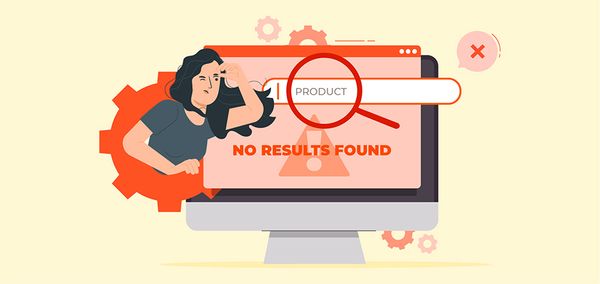Product Launch Checklist: 11 Steps for Launching Your Products

It’s an exhilarating yet overwhelming task for any business to launch a new product, so is dropshipping. Whether you're unveiling a groundbreaking innovation or a refined iteration of an existing offering, the success of your product launch can make or break its long-term viability in the market. It’s essential to have a comprehensive product launch checklist to navigate this critical phase seamlessly.
What Is a Product Launch
So what is a product launch? A product launch refers to the comprehensive process of introducing a new product or service to the market. This multifaceted endeavor encompasses a wide range of strategic activities, all of which must be meticulously planned and executed to ensure a successful debut.
The product launch process typically begins long before the actual release date, with extensive market research, product development, and pre-launch marketing campaigns. This preparatory work lays the foundation for a smooth and impactful launch, ensuring that the new product or service aligns with customer needs, effectively communicates its unique value proposition, and stands out in a competitive landscape.
Why Need a Product Launch Checklist
A well-crafted product launch checklist serves as a roadmap to ensure you don't overlook any crucial elements during this pivotal moment. So, why do you need a checklist for product launching?
Enhance Efficiency
Launching a new product requires seamless coordination and collaboration across numerous departments, from research and development to marketing, sales, and customer support. A detailed checklist helps to streamline communication, task delegation, and cross-functional alignment, ensuring that everyone on the team is working towards a common goal and understands their respective roles and responsibilities.
By providing a clear, step-by-step framework, a launch checklist helps to minimize confusion, eliminate the duplicated efforts, and foster a sense of accountability among team members. This, in turn, allows the organization to operate more efficiently, maximizing the use of resources and minimizing the risk of delays or missed deadlines.
Mitigate Risks
Introducing a new product to the market is inherently risky, with a multitude of potential challenges and roadblocks that can derail the launch, from regulatory hurdles and supply chain disruptions to unexpected market shifts and changes in consumer preferences.
A comprehensive product launch checklist helps to anticipate and address these potential risks before they arise, enabling the business to proactively develop contingency plans and implement risk-mitigation strategies. By identifying and addressing these challenges in advance, businesses can reduce the likelihood of costly setbacks and ensure a smoother, more successful launch.
Measure and Optimize
A detailed product launch checklist not only guides the initial launch process but also serves as a valuable tool for ongoing performance monitoring and optimization. By clearly defining key performance indicators (KPIs) and milestones, the checklist enables businesses to track their progress, identify areas for improvement, and make data-driven adjustments to the launch strategy.
This feedback loop allows businesses to continuously refine their approach, incorporating lessons learned from past launches and adapting to changing market conditions. As a result, future product launches can be streamlined, more efficient, and better aligned with customer needs and expectations.
What to Be Included in a Product Launch Checklist
If you are ready to launch your products, but don’t know where to start. The following are key steps to include in your checklist:
1. Understand Your Customers
Before you can effectively launch your product, it's crucial to have a thorough understanding of your target audience. You can conduct in-depth market research to gather insights into their pain points, preferences, buying behaviors, and the competitive landscape they operate.
You can achieve your goal by conducting customer surveys, interviews, and focus groups to better understand their needs, challenges, and decision-making processes. Also, it’s vital to analyze demographic data, such as age, location, income, and purchasing habits, to create detailed buyer personas that will inform your marketing and messaging strategies. Additionally, you need to research your competitors and their offerings to identify how your product can uniquely address the needs of your target customers.
2. Evaluate Previous Launches
If your business has launched products in the past, take the time to review the successes and shortcomings of those efforts. You can get the key lessons to learn by analyzing the data and gathering feedback from internal stakeholders.
After getting the information, you can refine your approach, optimize your processes, and avoid repeating mistakes. Moreover, it’s vital to look at metrics such as sales performance, customer satisfaction, and marketing campaign effectiveness to determine what worked well and what areas need improvement. Lastly, you should identify any common challenges or roadblocks that arose during previous launches, and develop strategies to mitigate those issues in the future.
3. Write a Positioning Statement
The next step is to craft a concise, compelling positioning statement that communicates your product's unique value proposition and how it addresses your target customers' needs. This statement will serve as the foundation for your marketing messaging and help differentiate your offering in a crowded market.
Your positioning statement should be succinct, highlighting the key benefits and features that make your product stand out. It should also align with your overall brand identity and resonate with your target audience. You can refine and test your positioning statement with potential customers to ensure it effectively conveys the value of your product.
4. Test Your Product
Before launching your product to the wider market, conduct thorough testing to ensure it meets your quality standards and delivers on the promised benefits. This step may involve beta testing with a select group of customers, gathering user feedback, and making necessary adjustments to the product.

|
Manage Multiple Stores In One Account Multiple Stores Management - Link and manage multiple stores on different platforms in one place |
Also, remember to identify a diverse group of beta testers who represent your target audience and gather their feedback on the product's functionality, usability, and overall satisfaction. Analyzing the data can help you identify any issues or areas for improvement and make the necessary changes to optimize the product before the official launch. This testing phase is crucial to ensuring a seamless customer experience and minimizing the risk of post-launch problems.
5. Develop Product Branding
The fifth step of the checklist is to develop a strong, cohesive brand identity for your product. The brand identity may include a distinctive name, logo, and visual assets. This branding should align with your overall company brand and resonate with your target audience, creating a memorable and recognizable product experience.
It’s better to work with your marketing and design teams to create a brand that reflects the product's core values, personality, and unique selling points. Apart from that, you should ensure that the branding is consistent across all touchpoints, from your website and packaging to your marketing materials and social media presence.
6. Plan Go-to-Market Strategy
After the branding, it’s time to plan your product's go-to-market strategy. It may start with identifying the most effective distribution channels, and pricing models, to promotional tactics to reach your target customers.
You can achieve it by building partnerships with retailers, e-commerce platforms, or industry influencers, as well as a comprehensive digital marketing campaign. Additionally, you should develop a pricing strategy that balances profitability, market demand, and perceived value. Lastly, it’s key to develop a multi-faceted marketing plan that leverages various channels, such as social media, email marketing, content marketing, and strategic partnerships, to generate awareness, drive engagement, and ultimately convert leads into customers.
7. Set a Goal for Product Launch
The next thing you should do is to establish clear, measurable goals for your product launch. The goal may include the initial sales targets, customer acquisition rates, or website traffic. These objectives will help you evaluate the success of your launch and guide your decision-making throughout the process.
When setting a goal, it’s essential to ensure that your goals are specific, achievable, and aligned with your overall business objectives. It’s better to develop a comprehensive set of key performance indicators (KPIs) that will allow you to track your progress and make data-driven decisions. Also, remember that regular monitoring and analysis will help you identify areas for improvement, make timely adjustments and maximize the impact of your product launch.

|
Adapt Your Product Prices Automatically DSers Automatic Pricing - Pre-set Pricing Rule to mark-up your product price automatically |
8. Create Product Documentation
Now, it’s time to develop comprehensive product documentation. It should include user manuals, technical specifications and any necessary regulatory information. This documentation should be easily accessible to both your internal team and your customers, ensuring a seamless onboarding and support experience.
The product documentation should be concise, and tailored to the needs of your target audience. The documentation needs to include step-by-step instructions, troubleshooting guides, and detailed information about the product's features and capabilities. Moreover, try to make this documentation available in multiple formats, such as online guides, PDF manuals, and video tutorials, to cater to different learning preferences.
9. Gather Feedback
To gather feedback from your customers, you can implement mechanisms to continuously gather feedback from your customers, such as surveys, online reviews, and direct communication channels. The feedback will help you identify areas for improvement, address any issues or concerns, and inform future product iterations and launch strategies.
To finish it easily, it’s necessary to establish tools, such as sales scripts, marketing collateral, and customer support resources, to effectively engage with your target audience. And, you can foster a sense of excitement and ownership among your team, as their enthusiasm and commitment will be crucial to the success of the launch.
10. Launch Your Product
Now that almost everything is ready, it's time to officially launch your product. The phrase involves a coordinated marketing campaign, a strategic press release, or a high-profile event to generate widespread awareness and excitement among your target audience.
You should plan and execute your launch strategy carefully. It’s necessary to leverage a mix of online and offline channels to reach your customers. It may include a dedicated product website, social media campaigns, email marketing, and targeted advertising, as well as in-person events, trade shows, or media appearances. Also, try to ensure that your launch messaging is consistent, compelling, and aligned with your overall branding and positioning.
11. Monitor the Performance
The last thing is to track and monitor the performance of your product launch. By tracking and analyzing key metrics such as sales, customer engagement, and brand awareness, you can identify areas for improvement, and make timely adjustments to your strategy to ensure the long-term success of your product.
To achieve this, it’s key to establish a robust analytics framework that captures and synthesizes data from multiple sources, including your sales, marketing, and customer service channels. Then you can review and interpret this data regularly to gain valuable insights into the performance of your launch. Also, use these insights to make informed decisions about product enhancements, marketing tactics, and overall launch strategy refinements.
Product Launch Checklist: Get Yourself Free
Launching a new product can be a thrilling yet daunting experience, but by leveraging a comprehensive product launch checklist, you can navigate this critical phase with confidence and increase your chances of success. A well-crafted checklist is not just a static document – it's a living, evolving tool that should be continuously refined and adapted to the unique needs of your business and your target market. With this strategic, step-by-step approach, you can ensure that your product launch is a resounding success, setting the stage for long-term growth and market dominance.
Need more information about e-commerce, read posts on DSers blog.












 Company
Company
 Why Choose DSers
Why Choose DSers
 Blog
Blog
 Help Center
Help Center




 Live Chat
Live Chat